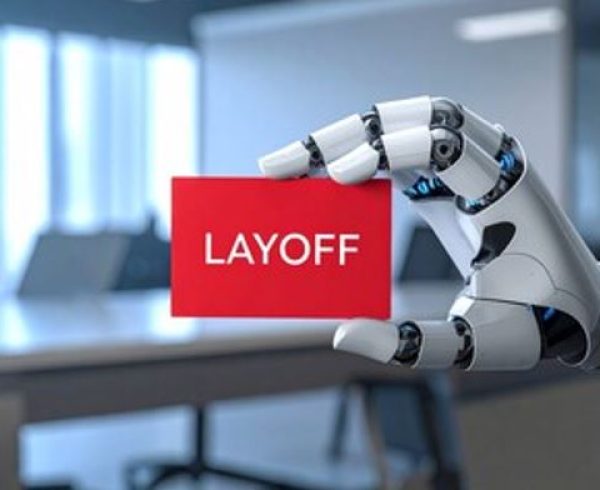Here’s a number that should make every CEO pause: 57.3 million Americans now work independently, with 4.7 million earning six-figure incomes. That’s not the gig economy your HR team thinks they understand. We’re talking about a fundamental shift where 36% of the entire U.S. workforce has chosen independence over traditional employment. Fractional executives sit at the apex of this transformation, and 72% of CEOs are already increasing their fractional usage. The companies that figured this out early are quietly building competitive advantages while their peers still post job descriptions on LinkedIn.
The Great Talent Migration
Something remarkable happened while traditional companies were perfecting their interview processes: the best executives left the building. Not because they were laid off or couldn’t find jobs, but because they discovered something better. 72.8% of fractional leaders have fifteen or more years of experience — that’s a concentration of senior expertise that would make any HR director weep with envy.
Think about it this way: while you’re competing with dozens of other companies for that perfect VP of Marketing, fractional executives are operating in a parallel universe of 27.7 million full-time independent professionals. They’ve already solved the problems you’re hiring for, probably multiple times, across different industries. They arrive with battle-tested playbooks while your traditional hire is still figuring out where the coffee machine is.
The speed difference is startling. Traditional executives need six to twelve months to hit their stride, assuming they ever do. Fractional leaders? They’re implementing solutions from day one because they’ve seen this movie before — and they know how it ends.
The Economics Are Brutal (For Traditional Hiring)
Let’s talk money, because that’s ultimately what boards care about. Fractional sales leaders average $9,651 monthly. Your full-time VP of Sales? Try $300,000+ in total compensation, plus six months of “getting up to speed” time, plus the risk that they might not work out and you’ll have to start over.
The math gets more interesting when you consider that over half of fractional leaders earned six-figure incomes last year. These aren’t people settling for less money — they’re often earning more while providing companies with exactly the expertise they need, when they need it.
Here’s where it gets really interesting: temporary business management roles have surged 57% since 2020, according to Bureau of Labor Statistics data. That’s not a trend — that’s a market speaking with crystal clarity about what works and what doesn’t.
Real Results, Real Companies
The performance data tells a story that’s hard to ignore. HBS Solutions brought in a fractional Chief Sales Officer who delivered $70,000 in closed deals within six months, plus built a $200,000 pipeline. They went from zero outbound sales capability to a functioning revenue machine while their competitors were still writing job descriptions.
Bitwise Corporation achieved something remarkable: 100% proposal win rates while cutting program costs by $25 million. How? Their fractional leaders imported methodologies from completely different industries — solutions that an internal team would never have discovered because they were looking at the same problems through the same lens.
Then there’s the B2B services company that generated $600,000 in ROI from a $60,000 fractional investment. That’s a 10x return, achieved largely because the fractional executive could make recommendations that internal leaders couldn’t — or wouldn’t — make due to politics and career preservation concerns.
The pattern repeats everywhere you look: a Virginia product development company cut management overhead by 40% while improving delivery times by 25%. A professional services firm boosted website engagement by 50% and email performance by 45%. These aren’t unicorn stories — they’re becoming the new normal.
The Strategic Shift
Smart companies have figured out where to deploy fractional talent for maximum impact. Finance leads at 30% of fractional roles, with marketing taking 19% — exactly the functions where mistakes are most expensive and expertise delivers the biggest leverage.
The deployment model itself is brilliant. Fractional executives typically work ten to fifteen hours monthly per client, but those hours are pure strategic value. No time wasted in meetings about meetings, no office politics, no empire building. Every minute is focused on moving the needle.
Geography has become irrelevant too. With 57% of professionals working remotely according to Upwork data, companies can access the best supply chain expert in Singapore, the top regulatory specialist in London, or the leading technology strategist in Silicon Valley — all at fractional rates and without the complexity of international hiring.
The New Workforce Reality
The numbers tell a story that’s impossible to ignore. 36% of employed Americans now work independently — that’s up from 27% in just 2016, according to McKinsey research. We’re not talking about a gradual shift; this is a fundamental restructuring of how work gets done.
Technology companies are deploying fractional CTOs for AI integration without the risk of full-time salary commitments to rapidly evolving skills. Healthcare organizations are leveraging fractional regulatory experts without building permanent bureaucracy. Manufacturing companies are using fractional supply chain specialists without long-term employment commitments during uncertain times.
The network effects have reached critical mass. As more top executives choose the fractional path, the quality of available talent increases, which attracts more companies to the model, which creates even more opportunities. It’s a positive feedback loop that’s now operating at massive scale.
Making The Transition
The companies succeeding with fractional executives start with a clear strategy. They identify where expertise gaps are costing them the most — usually CFO functions for growing companies or marketing leadership for digital transformation. The key is having clear performance metrics and streamlined decision-making processes.
The most successful organizations develop what we might call “fractional readiness” — the ability to quickly onboard expertise and implement recommendations without getting bogged down in politics or bureaucracy. This readiness becomes a competitive advantage itself, enabling faster responses to market changes than competitors stuck in traditional hiring processes.
Smart companies start with ninety-day pilot programs, measure results rigorously, then expand based on demonstrated ROI. They audit their current executive spending against actual results and calculate the true cost of unfilled positions, including lost opportunities.
The Bottom Line
The fractional revolution isn’t coming — it’s here, operating at the scale of 57.3 million independent professionals, with 4.7 million earning six-figure incomes. Fractional executives represent the elite tier of this massive transformation, offering access to expertise that traditional hiring simply can’t match.
Organizations that embrace fractional strategies are accessing a 27.7 million strong independent workforce while their competitors fight over an increasingly limited pool of traditional candidates. They’re getting better results faster, with more flexibility and less risk.
The choice isn’t whether fractional leadership will become mainstream — the data shows it already is. The choice is whether you’ll be early enough to capture the advantages or late enough to become a case study in why companies that don’t adapt get left behind.
The best talent has already moved. The question is whether you’ll move with them.
Ready to explore how fractional executives can transform your organization? Mythos Group specializes in connecting companies with elite fractional talent across all C-suite functions. Contact us to discuss your specific leadership needs and discover how the right fractional expertise can accelerate your strategic objectives.







